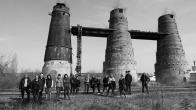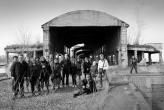Homepage » Archived editions » 44th edition » Panel of judges
Panel of judges
The expert panel of judges is made up of teachers of visual art branches at primary art schools and primary schools and of professional visual artists from Czech Republic and from abroad. The number of judges is not fixed, however, the panel has usually 13 - 25 judges. Many of them have engaged in the work with children for many years and also are judges in other art competitions which enhances their knowledge about the quality of art education of children in the schools in our country and abroad.
The panel of judges of the 44th ICEFA 2016 sat in two rounds: on 24 – 26 March (selecting works) and 31 March - 2 April 2016 (final awarding works) at the Lidice Gallery in Lidice.
Members of the 44. ICEFA 2016 panel of judges
Members of the panel of judges from Czech Republic
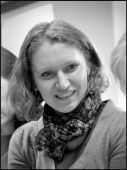
Jana Anděličová
teacher at Marie Podvalová Art School Prague 9 and Art School Štítného, Prague 3, Czech Republic
1st round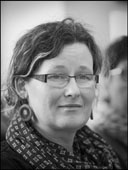
Eva Bartošová
teacher at Art School Nové Město pod Smrkem and Domov Raspenava
1st round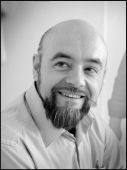
Čeněk Hlavatý
headmaster at Art School Mšeno, Czech Republic
1st and 2nd rounds
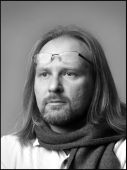
Martin Homola
photographer, Buštěhrad, Czech Republic
1st and 2nd rounds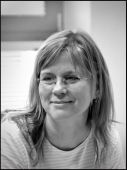
Zuzana Hrubošová
headmistress at M. Stibor Art School Olomouc, Czech Republic
2nd round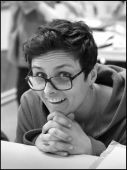
Ivana Junková
headmistress at Art School Řevnice, Czech Republic
1st round
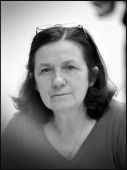
Hana Jurková
headmistress at Private Art School Jeseník, Czech Republic
1st round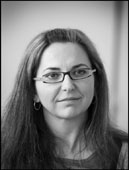
Eva Kuncipálová
museum educator, National Pedagogical Museum and Library J. A. Comenius, Prague
1st round
Pavel Rajdl
teacher at F. Kmoch Art School Kolín, Czech Republic
2nd round
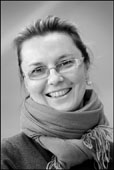
Ivana Schwarzová
teacher at Art School Strakonice, Czech Republic
1st round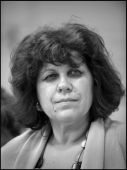
Jaroslava Spěváčková
teacher at the Art School Plzeň, Jagellonská, Czech Rebublic
2nd round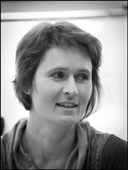
Lenka Spoustová
teacher at F. Kmoch Art School Kolín
1st round
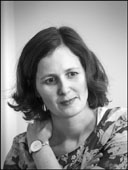
Martina Sumcová
teacher at Primary School Sedmikráska Rožnov pod Radhoštěm, Czech Republic
1st round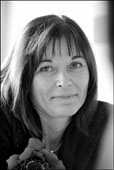
Romana Štajerová
teacher at Art School Plzeň, Jagellonská, Czech Republic
1st and 2nd rounds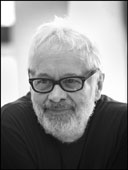
Robert Vano
photographer, Prague
2nd round
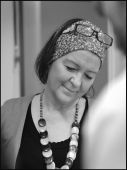
Zuzana Vlčková
teacher of arts at Gymnázium Kladno, Czech Republic
1st and 2nd rounds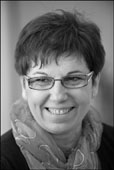
Alena Zupková
teacher at V. Vančura Art School Háj ve Slezsku, Czech Republic
1st and 2nd rounds
Members of Panel of Judges from abroad
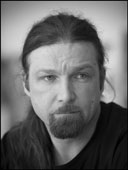
Tomáš Krivý
teacher at Považska Bystrica Art School, Slovakia
1st round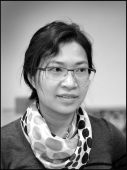
Iris Lau
the founder of the Gifted Artists Foundation, Hong Kong, China
2nd round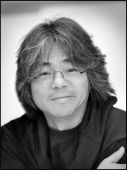
Henry Lau
the founder of the Gifted Artists Foundation, Hong Kong, China
2nd round
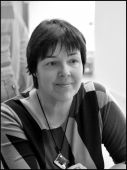
Ilze Rimicane
the Art chief of the youth centre Daugmale, Riga, Latvia
2nd round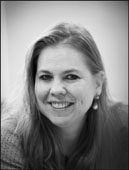
Debrah Sickler-Voigt
professor of art education, Middle Tennessee State University Murfreesboro, TN, USA
2nd round
Report of the Session of the Expert Panel of Judges Held on 24 - 26 March and 31 March - 2 April 2016 to Evaluate the 44th ICEFA Lidice 2016
Members of the Panel of the 44th ICEFA Lidice 2016
Chairman of the panel:
- Josef Zedník - visual artist, Olešná (1st and 2nd rounds)
Members of the panel from Czech Republic:
- Jana Anděličová – teacher at Marie Podvalová Art School Prague 9 – Čakovice and Art School Štítného, Prague 3 (1st round)
- Eva Bartošová - teacher at Art School Nové Město pod Smrkem and Domov Raspenava (1st round)
- Čeněk Hlavatý – headmaster at Art School Mšeno (1st and 2nd rounds)
- Martin Homola – photographer, Buštěhrad (1st and 2nd rounds)
- Zuzana Hrubošová – headmistress at M. Stibor Art School Olomouc (2nd round)
- Ivana Junková – headmistress at Art School Řevnice (1st round)
- Hana Jurková – headmistress at Private Art School Jeseník (1st round)
- Eva Kuncipálová – museum educator, National Pedagogical Museum and Library J. A. Comenius, Prague (1st round)
- Ivana Schwarzová – teacher at Art School Strakonice (1st round)
- Jaroslava Spěváčková – teacher at Art School Plzeň, Jagellonská (2nd round)
- Lenka Spoustová - teacher at F. Kmoch Art School Kolín (1st round)
- Martina Sumcová – teacher at Art School Sedmikráska Rožnov pod Radhoštěm (1st round)
- Romana Štajerová – teacher at Art School Plzeň, Jagellonská (1st and 2nd rounds)
- Pavel Rajdl – teacher at Art School Kolín (2nd round)
- Robert Vano - photographer, Prague (2nd round)
- Zuzana Vlčková – teacher of arts at Gymnázium Kladno (1st and 2nd rounds)
- Alena Zupková – teacher at Art School Háj ve Slezsku (1st and 2nd rounds)
Members of panel of judges from abroad:
- Tomáš Krivý – teacher at Považska Bystrica Art School, Slovakia (1st round)
- Henry and Iris Lau – the founders of the Gifted Artists Foundation, Hong Kong, China (2nd round)
- Ilze Rimicane - art director of Children’s and Youth’s Centre Daugmale, Riga, Latvia (2nd round)
- Debrah Sickler-Voigt - art teacher, Middle Tennessee State University Murfreesboro, TN, U.S.A. (2nd round)
Marking the 70th anniversary of UNESCO and its foremost priority – educational development of all people, this year's edition dedicated to the theme SCHOOL? EDUCATION! saw 18,075 participating children from 77 countries. Although the number of participants was slightly smaller as against previous years, the number of represented countries increased. What is interesting is that the number of participating schools was not much smaller than in previous years, which implies that there are many schools still participating but sending less entries in. This may be a result of a teacher's careful selection so that only the best works are sent in, or it may stem from concerns about high costs of postage, especially from abroad. The questionnaire sent out to once successful schools that have not participated in this year's edition shows that more than a half of Czech respondents did not participated in the competition because the teacher who had been sending in the works regularly had left or had been very busy; A smaller portion indicates as a reason a lack of time to create the works, coincidence with closing dates of other art competitions or bad quality of works so that the teaching staff decided not to send them in. On the other hand, foreign schools explained that the reason for their non-participation was the theme that did not suit neither children nor the teachers, in other cases, high costs of postage, a lack of certificates of participation for all participating children, and last but not least, the political situation in their country (Russia, Ukraine).
This year again, the panel sat in two equal rounds; the first round saw 4,500 out of 18,000 entries pre-selected while the second one selected almost 1,400 entries for awards. At the end of the second round the judges agreed to award the Prize of the Panel of Judges to one foreign and one Czech school. This year children created works on the theme "School and Education", which only seems easy. This year it was confirmed more than ever how important in the course of children's artistic work the role is of a teacher who is able to motivate the children and pick up an inspiring element among the sub-themes of an initially not very attractive theme, offer them a suitable artistic medium and encourage them to render it in an interesting way.
Certainly, the prevalent motive of the competition entries was the school environment which children are very familiar with – school buildings, roads and paths to schools, teaching staffs and non-teaching personnel, specialized classrooms and rooms full of interesting specimens. Children were keen to show us their classrooms, invited us to participate in their classes, made us acquainted with their teachers, schoolmates and friends, drew us into vigorous activities pursued during breaks, took us to interesting school excursions and trips and many times they unpacked their school bags including snacks. Many children paid special attention to Comenius whose face was present in almost every collection from Czech schools, but surprisingly, also in many foreign ones. Making comparisons of how interestingly the theme of the school was rendered by children from various countries, we could say that it was more inspiring for children from Czech schools (as has been already indicated) than for foreign participants. In general, Czech children less frequently expressed themselves in a simplistic way and their works well developed the theme of the school and the school life as well as school observations, thoughts and ideas.
Also this year, there were some entries with unsuitable make-up, exceeding the limits on dimensions, poorly labelled or made by artists older than allowed by the rules. In contrast with previous years, however, the overall quality of the collections improved. Our praise goes to the teachers who carefully selected their entries so that only the best ones would be sent in. This year there were also many prints that were well done from the technical as well as artistic point of view. The panel understands the growing number of prints as growing interest of teachers in printmaking media.
On the other hand, in contrast to previous years, photographs were much scarce and featured less interesting subjects. Perhaps it could be attributed to this year's theme that was less inspiring for young photographers and more difficult to approach to than that of the last edition, which was LIGHT.
Summary on entries
Number of entries in total: 18,075
Number of participating / awarded countries: 77 / 68
Number of participating / awarded organizations: 1,483 / 448
Number of newly registered schools: 429
Awards: Out of the total of 18,075 entries from 77 countries 1,390 were awarded prizes including 212 medals (147 individual medals, 3 medals for children’s team work and 62 medals to schools for their collections) for 68 countries.
Summary on foreign entries (without Czechia and Slovakia)
Number of foreign entries: 11,292 (10,397 paintings, 442 photographs, 77 items of ceramics, 376 mixed media items)
Number of participating countries: 75 (without Czechia and Slovakia)
Number of participating / awarded organizations: 1,035 / 251
Number of newly registered schools: 366
Awards: Foreign entries won 539 prizes including 70 medals (54 medals to individuals, 2 medal for team works and 14 medals to schools for their collections).
This year's edition saw 11,292 entries by children from 75 countries (besides Czechia and Slovakia), which is less in total than last year and in previous years. Although there were less participants this year, the competition widened its geographical scope – this year saw 6 new countries (Chile, Cyprus, Luxembourg, Palau, Senegal, Tajikistan) and some other countries coming back after a longish gap (e.g. Belgium, Canada, Morocco and Zimbabwe).
The highest number of awards goes to children from Belarus, Bulgaria, China, Croatia, India, Iran, Latvia, Poland, Russia, Slovenia and Ukraine. By contrast, some other countries were scantily represented this year, often by only one school with several entries, which reduced chances for winning an award and made impossible for the panel to assess the artistic level of the country in a complex manner (Argentina, Egypt, Ethiopia, the Philippines, Italy, Cambodia, Kosovo, Laos, Malta, Norway, Palau, Austria, Greece, Spain, Sweden, Switzerland, Tajikistan, Vietnam, Zimbabwe).
As in previous years, foreign collections are characterized by a "simplistic approach" to rendering the theme. The collections contained mainly pictures of classrooms, pupils at desks and in school yards and teachers in front of blackboards while some works even responded to violence in schools, depicting e.g. terrorists' attacks that are a fact of life in some countries. So, schools are no longer a safe place as it should be. In assessing the artistic value and subjects of the entries, we could see that whenever a deeper artistic insight into the matter is needed, foreign schools are often at a loss. It is definitely impossible to apply the same criteria to them as to the Czech and Slovak schools, taking into account that there is often no systematic art education in those countries and often even a lack of materials and equipment.
As to the art media in foreign entries, painting prevails, often not very well mastered and characterized by colourfulness for its own sake. On the other hand, there are some very good paintings and above all, prints, the amount and quality of which is growing year by year. Traditionally good quality can be found in Bulgarian entries (exquisite collections from Fine Arts School Targoviště and Art Studio Prikazen Svjat Sofia), China (an excellent collection from Simply Art Hong Kong), India (Young Envoys International Hyderabad) and Latvia, every year's success of which is based on excellent cooperation of the organizers of the Latvian national sub-competition Lidice, who, at their own expense, bring the awarded entries to Lidice, securing high number of awards for Latvia and enriching the exhibition with spatial entries by Latvian children, who like and know how to work in ceramics, glass and textile. On the other hand, some entries from other countries demonstrate that many schools use the same art techniques notwithstanding the recommended theme; the unvarying method of their work diminishes their chances to succeed in the competition.
It is gratifying that this year new participating countries came to the scene. It is apparent that the main factor is always the personal approach and zeal of an individual, whether it is a teacher, ambassador or curator of the exhibition. A good example is the participation of a Nepalese school in India (Sun School in Kargyak founded by a Czech student), the participation of which was possible thanks to its co-operation with the Czech nursery school Sunny Canadian in Jesenice, which received the photographs in an electronic form, paid for their printing and sent them to Lidice. The social document – photos of school life taken by children who had the first opportunity to try an take a photo – is to be appreciated. A similar story is behind the participation of children from the community centre Rustinga Island in Kenya, established and operated by Centrum Narovinu; its staff provided children with cameras, printed their photos of their school and their school life and sent them to Lidice. Or the participation of children from Senegal – their pictures were brought to Lidice by people from the project Derbianus Conservation (a society for conservation of Derby's antelope at the Czech University of Life Sciences) who had provided children with art supplies. Also many other entries to our competition relate to the work of Czech teachers abroad and their "spiritual" connection with Czechia – this year, works from "their" schools were sent by compatriots from Australia, Luxembourg, Israel and even Palau.
Summary on Czech entries:
Number of entries: 5,050 (3,905 paintings, 152 photographs, 379 items of ceramics, 614 mixed media entries)
Number of participants: 335 (36 nurseries, 98 primary schools, 107 art schools, 29 special schools, 25 hobby groups and child and youth centres, 11 secondary schools, 29 individuals)
Number of awarded organizations: 146 (13 nurseries, 23 primary schools, 70 art schools, 14 special schools, 15 hobby groups and child and youth centres, 6 secondary schools, 6 individuals)
Number of newly registered schools: 50
Awards: Czech children sent in 5,050 entries this year and received 674 prizes including 110 medals (69 medals to individuals and 1 for a collective work of children, 40 medals to schools for their collections).
Although the number of foreign entries decreased as against last year, the same cannot be said about the Czech entries – this year their number was the same as last year; it is gratifying that additional 50 schools joined the competition.
It is due again this year to commend the works of children from the art schools (Dačice, Háj ve Slezsku, Hradec nad Moravicí, Private Art School Jeseník, Kolín, Krnov, [Main Square], Most [Moskevská street[, Plzeň [Jagellonská and Terezie Brzkové streets], Olomouc, Prague 9 [Prosek U Prosecké školy and Čakovice Marie Podvalové], Postoloprty, Prostějov, Strakonice and Zlín [Arts Schools Morava and Zlín Malenovice], which clearly manifest knowledgeable leadership and continual work of art teachers. Nevertheless, beautiful works of quality have not been created only in art schools, the have come also from primary schools (Červené Pečky, 11th PS Most, Malecí T.G. Masaryk PS Opava, Prague Vodičkova street, Sedmikráska Rožnov pod Radhoštěm), in hobby groups and child and youth centres (Art Workshop Vinohrady Prague 2, Art Workshop Paletka Plzeň) in special schools (practical school Brno Vídeňská street, special and practical school Jihlava, Centrum Arpida České Budějovice, Domov Raspenava) and this year, after a longish gap, also in secondary schools (Gymnázium Frýdlant and Krnov).
Unlike previous year, this one has not had any big surprise for us in the collections sent in by Czech schools, especially the art ones. The traditionally good schools maintained their standards. It is appropriate to mention the Art School Mšeno as the unique school in terms of the scope and the way of use of less usual materials that require mastering of a specific technology, primarily glass and metal. As has become a tradition for this school, its works are based on a deeper insight into the theme, which is deficient in many other schools.
Also gratifying was the collection of small-sized prints from the Art School Zlín, which demonstrates that even a small format can contain a beautiful work of art, as well as the collection of prints from the Art School Prague 9 Prosek and the Arts School Terezie Brzkové Plzeň. Despite these good results it is necessary to mention that while the teachers at most participating schools are well qualified, still entries are coming of disputable quality, not complying with the set theme, created in classes and named expediently to comply with the current theme. This state of affairs is alarming, particularly at art schools.
The panel of judges recommends a school round to be undertaken and stresses the necessity of reasonable pre-selection of entries. Where a teacher works alone, it is recommended that they should compare the quality standard of their pupils' works with the archives of the award-winning entries from previous years, well documented at the ICEFA website. It is apparent that a good many participating schools had been preparing responsibly, starting well ahead of time. It is manifested in the variety not only in terms of subjects but also materials. Many schools found a school round useful; as a result, the collection does not contain a lot of similar works. Furthermore, the panel of judges recommends that the schools should respect materials and their possibilities as much as possible, follow the work through and give the craft its due.
It has also followed from discussions in the panel that despite the high standard of art education at Czech schools it would be advisable for the relevant authorities to offer a wider range of additional training and education courses for art teachers. This is especially relevant for teachers at primary schools and gymnasiums, who often do not have the opportunity to encounter a different opinion, which can lead them to a certain stereotype.
Summary on the Slovak entries:
Number of entries: 1,733 (1,475 paintings, 66 photographs, 13 items of ceramics, 179 mixed media entries)
Number of participating schools: 113 (10 nurseries, 22 primary schools, 65 art schools, 10 special schools, 4 hobby groups and child and youth centres, 1 secondary school, 1 individual)
Number of awarded schools: 51 (2 nurseries, 9 primary schools, 34 art schools, 4 special schools, 2 hobby group and child and youth centres)
Number of newly registered schools: 13
Awards: The assessed entries won 177 awards including 32 medals (24 individual medals and 8 medals to schools for their collections).
The number of entries sent in from Slovakia is not significantly smaller than that of last year; the same applies to the number of participating schools. The most successful art schools were J. Cikker Art School Banska Bystrica, Art School Holíč, A Cíger Art School Kežmarok and Art School Spišská Belá, among the entries from primary schools and hobby groups, there were excellent collections from the Private School Galileo Bratislava, Žilina Jarná street, Art SLNEČNICE, a citizen's association from Bratislava. Compared to the previous year, this year's entries by Slovak children were of better quality, which has been reflected in a greater number of awards.
Prize of the Panel of Judges
The Prize of the Panel of Judges for a Czech school was awarded to Private Primary School Sedmikráska from Rožnov pod Radhoštěm for its outstanding and consistent work with children in all walks of visual arts; the school presented a rich collection of spatial and areal works that is fully comparable to collections from art schools. The above-mentioned school participates in the competition for many years and the entries by Rožnov children are always the pride of the exhibition. The Prize of the Panel of Judges for a foreign school goes to Young Envoys International from Hyderabad in India for their thematic and visually rich collection of colour prints, taking into account its consistent and significant successes and long-term participation in the competition.
Conclusion
The Panel of Judges would like to thank all children who took an interest in the theme SCHOOL? EDUCATION! to such extent that they felt like render it and send their work in. It was not easy to select the best and it is impossible to award all of them. We believe that, working on this year's theme, the children enjoyed themselves, that the work made them move forward on their artistic way and inspired their minds, because this is the main purpose of creative work. Our thanks go also to all the teachers, for whom this year's theme was not easy to grasp; however, they managed to create interesting and beautiful collections with the kids and we believe that also for them it was an enriching experience. John Amos Comenius would be pleased not only by the creativity of Czech schools but by all works by participants from all over the world.
What also deserves appreciation is the work of the international panel of judges with its specifics stemming from the cultural and social backgrounds of each of the judges and from the different approaches to art education applied in each represented country. Thanks to discussions, the annual meetings over the works by participants in ICEFA Lidice are very enriching and beneficial for all the present, who can subsequently pass their experience to people in their home environment.
The work of the international panel would be impossible was it not for the staff of the Lidice Memorial who had prepared the exhibition perfectly. Managing the huge amount of work in receiving and registering the entries and then organizing infallibly the sessions of the panel in both rounds including comfortable and pleasant services that enabled the panel to concentrate on their work – it is something that can be hardly appreciated in full.
This year's edition has also brought the co-operation with the Comenius Museum in Prague where an exhibition will take place, consisting of entries directly inspired by the teacher of nations.
The members of the panel would like to express their gratitude towards the ICEFA curator who mediated their meeting with Mrs Marie Šupíková, who as a child survived the Lidice tragedy, so that they were able to witness the strength of a person in her unique recounting, which reminds us about what we should remember not only in Lidice.
Josef Zedník, Chairman of the panel of judges of the 44th ICEFA Lidice
Ivona Kasalická – Head of the Lidice Gallery and Curator of ICEFA Lidice
Portraits of jury members and photos from the jury: © Martin Homola

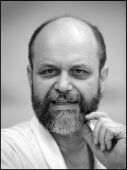
-(kopirovat)m.jpg)
-(kopirovat)m.jpg)
-(kopirovat)m.jpg)
-(kopirovat)m.jpg)
-(kopirovat)m.jpg)
-(kopirovat)m.jpg)
-(kopirovat)m.jpg)
-(kopirovat)m.jpg)
-(kopirovat)m.jpg)
-(kopirovat)m.jpg)
-(kopirovat)m.jpg)
-(kopirovat)m.jpg)
-(kopirovat)m.jpg)
-(kopirovat)m.jpg)
-(kopirovat)m.jpg)
-(kopirovat)m.jpg)
-(kopirovat)m.jpg)
-(kopirovat)m.jpg)
-(kopirovat)m.jpg)
-(kopirovat)m.jpg)
-(kopirovat)m.jpg)
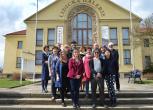
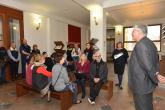
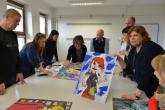
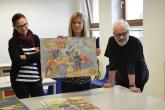
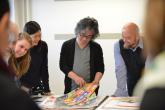
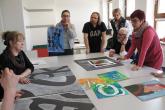
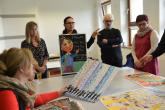
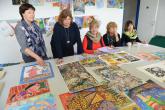
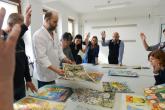
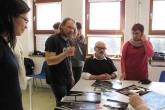
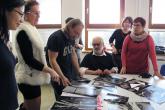

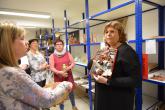
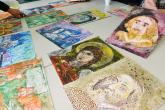
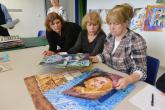
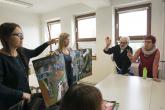
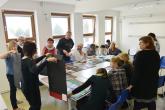
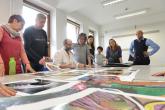
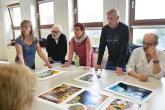
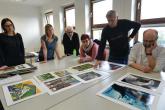
m.jpg)
